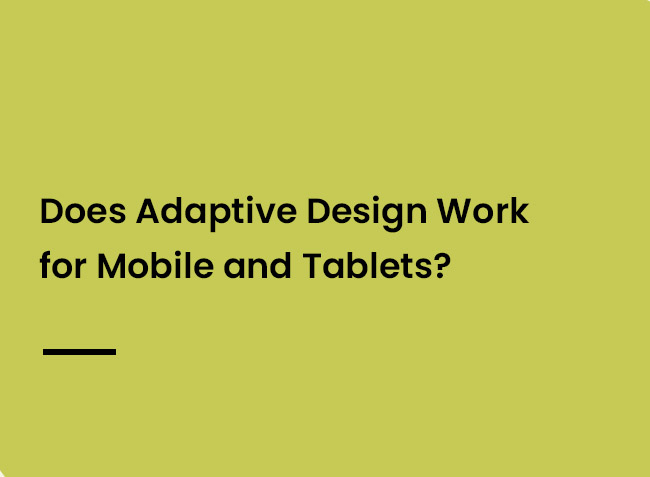
What is Adaptive Design?
tells us that Adaptive web design (AWD) promotes the creation of multiple versions of a web page to better fit the user’s device, as opposed to a single static page that loads (and looks) the same on all devices or a single page which reorders and resizes content responsively based on the device/screen size/browser of the user.
Nowadays, if your website is not adaptive then you are going to lose customers. Essentially, having an adaptive design helps with conversion rates.
Also read: 15 gorgeous landing pages that are conversion-focused
What does this tell us about the adaptive web market?
The answer is simple. If websites that have been customised for normal browsing on tablets have not been made easily viewable on mobile phones by implementing adaptive design, then basically, these sites are not catering to what the users now want and now expect. If you do not pander to these growing mobile consumer ‘must haves’ and are unwilling to accept the fact that adaptive design can increase mobile web traffic by enhancing user engagement, then you and your company will be left behind. Oberlo tells us that the latest figures show an increasing number of smartphone users year after year. In 2021, the number of global smartphone users is estimated at 6.4 billion, marking a 5.3 per cent annual increase. It is also 73.9 per cent more than the number of smartphone users there were in 2016, just half a decade ago. What this means for the mobile audience is that if you’re not helping them find what they are looking for then they will not use your website.
Evolution in this market is happening now at such a rapid pace that it is your responsibility as a business owner to ensure an adaptive web strategy is employed.
If you really want to see the way forward, just look at the banking and aviation sector. They have all jumped on board the adaptive web design train and have made their mobile sites as user friendly as possible. Minimal content with super fast access to only the most critical bits of information means that they are now catering to what all mobile consumers are looking for. That is a no-nonsense approach to delivering content.

And now for Tablets.
Tablets such as ipads are clearly for swiping. The consumer market is now highly trained in the art of swiping ( from ibook, magazines, blogs, kindles, the list goes on and on) and are happy to look at horizontal swiping as opposed to the traditional forms of web desktop engagement that make users perform vertical scrolling with the mouse, finger and arrow key. The tablet market is booming and like with the mobile phone trend, consumers now demand that they view content and engage with this content in a certain fashion. If you go against the grain and are unwilling to satisfy these demands, then you can expect user bounce rates to increase which can and will lead to lost sales, revenue and customers. Basically, you have to give the general public what they want or else they are not going to buy from you. The online market is that competitive and users are now that web-savvy ( I have seen kids as young as 5 years of age who are absolutely professional tablet browsers), that adaptive web development should now be a part of your marketing strategy.
Make sure you ask your web developer about this as it is a lot easier to do this from the ground up at the planning stage than done retrospectively.
If you are reading this article and are worried about implementing adaptive web design then don’t be. In some cases, it is only a matter of reducing some of the white areas on the site and reducing the number of words. Take away some of the complexity that some websites may have like newsletter sign up areas and keep the tabs to only what is necessary. In point of fact, most people want a simple, clean looking design interface for a website and if you go down this path, then the whole adaptive design process for mobiles and tablets just became that much easier for you and your web developer.
Advantages and disadvantages of adaptive design
One of the best advantages of adaptive design is that the content is fully customized for the screen. It will match the content precisely for that device you use. It gives you the freedom to create a separate design interface for the mobile phone so you can really grab clients attention with customised design features for that mobile or tablet. I’ve often gone through the design on a mobile phone that had responsive design and made many fine-tune adjustments to make it more conversion-focused. Yes, there is a bit more work involved but adaptive design pays off in the long run as you can really customise the design and content for each device.
The only disadvantage is the extra work involved. You have to go on each device and make amends separately. But, for the customer experience, it’s well worth the time and effort. So if you’re asking if adaptive design work for mobile and tablets, the answer is definitely yes. It’s a winner!
Remember, try to go with a web design agency that knows what they are doing in terms of design and development. It’s your business and if you want to succeed online then this is the best way forward.
